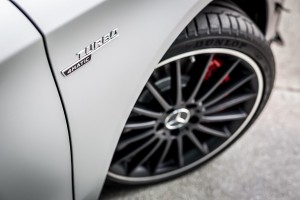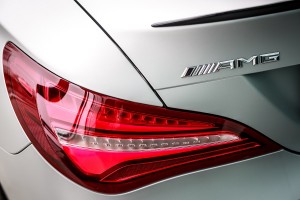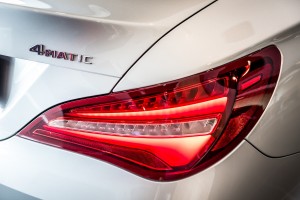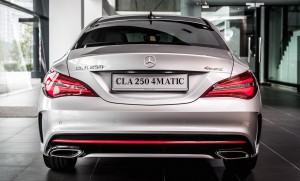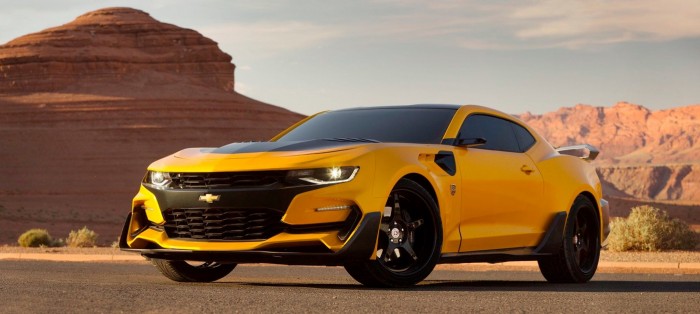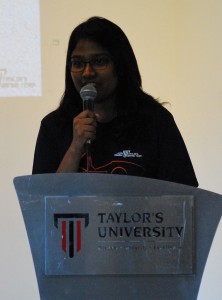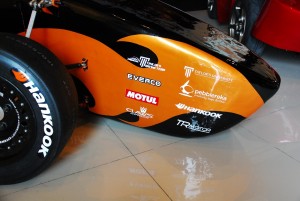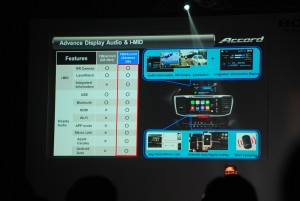Mercedes-Benz Malaysia has updated its 4-door premium coupe, CLA. The CLA range is made up of 3 variants – CLA 200, CLA 250 Sport 4Matic and the range-topping Mercedes-AMG CLA 45 4Matic.
The engines for the latter 2 models are carried over from the previous – the CLA 200 has a 1.6-liter 4-cylinder engine that outputs 156 hp @ 5,600 rpm and 250 Nm of torque between 1,250 – 4,000 rpm and the CLA 250 uses a 2-liter engine with 211 hp @ 5,500 rpm and 350 Nm @ 1,200 – 4,000 rpm. On the other hand, the CLA 45 gets a refreshed 2-liter engine with more power than before i.e. 381 hp @ 6,000 rpm and 475 Nm @ 2,250 – 5,000 rpm. All the engines are paired with a 7-speed DCT (dual clutch) automatic transmission; the CLA 45 gets an AMG SPEEDSHIFT sports transmission with Race Start function. The CLA 200 and CLA 250 have the shift stalk mounted on their steering column while the CLA 45 gets a more conventional shift lever on the center console. The DYNAMIC SELECT feature allows the car’s engine, transmission and steering characteristics to be changed at the touch of a button.
The CLA 200 has a 0 – 100 km/h time of 8.2 seconds and top speed of 230 km/h; the CLA 250, 6.5 seconds, 240 km/h and the CLA 45, 4.2 seconds, 250 km/h. Fuel consumption based on the NEDC combined cycle is 5.5 l/100km, 6.5 l/100km and 6.9 l/100km respectively.
All 3 variants now have the AMG Line exterior with the distinct diamond radiator grille with chrome pins, chrome-plated twin tailpipes, and side sills. The suspension has also been lowered for a more aggressive stance as well as to improve handling. The front and rear bumpers come with chrome trim (the CLA 250 gets the Night package black trim at the rear). The tailpipe trim panels are now flushed with the bumper for a more integrated look while adding visual width to the car.
 The higher-performance Mercedes-AMG CLA 45 4MATIC gets more aggressive kit for improved aerodynamics and stability. There are no chrome pins on the front grille but twin louvers with silver chrome finish. the new AMG spoiler lip on the boot lid, the AMG front apron in new A-wing design with front splitter inserts in matte titanium grey and high-gloss black flics, the new diffuser insert design with four vertical fins and the AMG Aerodynamics package. This consists of a larger front splitter, additional flics, a black AMG spoiler lip at the rear plus spoiler lips over the simulated air outlets on the rear sides.
The higher-performance Mercedes-AMG CLA 45 4MATIC gets more aggressive kit for improved aerodynamics and stability. There are no chrome pins on the front grille but twin louvers with silver chrome finish. the new AMG spoiler lip on the boot lid, the AMG front apron in new A-wing design with front splitter inserts in matte titanium grey and high-gloss black flics, the new diffuser insert design with four vertical fins and the AMG Aerodynamics package. This consists of a larger front splitter, additional flics, a black AMG spoiler lip at the rear plus spoiler lips over the simulated air outlets on the rear sides.
The facelifted CLA is now fitted with LED High Performance headlamps which has a color temperature that is closer to daylight than Xenon headlamps; it’s easier on the eyes especially at night. The 34-watt LED  low-beam headlamps are also less power hungry – about 60% less energy consumption than Xenon and around 70% less than halogen.
low-beam headlamps are also less power hungry – about 60% less energy consumption than Xenon and around 70% less than halogen.
The low-beam headlamps use LED projection technology and the main-beam, reflection technology. The direction indicators, daytime running lamps and position lights are multi-functional fiber optic cables which are also used for the “Coming Home” function.
The head and tail lamps have an automatic intensity control to reduce the dazzling effect for vehicles behind. This multi-level functionality regulates the brightness of the brake lights and direction indicators in three stages i.e. Day, Night-time driving and Night-time stationary.
Complementing the new exterior are the 18″ AMG multi-spoke light-alloy wheels on the CLA 200, 19″ AMG cross-spoke light alloy wheels on the CLA 250, front perforated brake discs and front calipers with Mercedes-Benz lettering.
The interior has also been updated with new seat covers, trim parts and chrome-plated controls. The silver chrome finish can be found on the controls, fascia and switches on the doors as well as on the center console. The 8″ freestanding media display is now slimmer-looking and comes with a new-style glass cover. The CLA 200 and CLA 250 are equipped with the Audio 20 CD systems, while the CLA 45 has COMAND Online. The new-style dials and instrument cluster refreshed with red needles make it easier to read the instruments.
The CLA 200 and CLA 250 get black DINAMICA microfiber in the interior and ARTICO man-made leather / DINAMICA microfiber for the sports seats, in addition to the flat-bottomed sports steering wheel. Meanwhile, the CLA 45 instrument panel is upholstered in ARTICO man-made leather, as are the beltlines (finished with contrasting red stitching).
Among the standard safety features are Active Brake Assist (previously known as COLLISION PREVENTION ASSIST PLUS), which can trigger autonomous braking to reduce the risk of rear-end collisions, ATTENTION ASSIST, Electronic Stability Program, Acceleration Spin Control and 7 airbags.
The CLA 200 is priced at RM 236,888; CLA 250 Sport 4Matic, RM 278,888 and CLA 45 AMG 4Matic, RM 408,888.
The Mercedes-Benz CLA is available with Agility Financing from RM 3,088 a month, with comprehensive motor insurance that also includes windscreen coverage.
Mercedes-AMG CLA 45 4MATIC:
Mercedes-Benz CLA 250 Sport 4MATIC:











